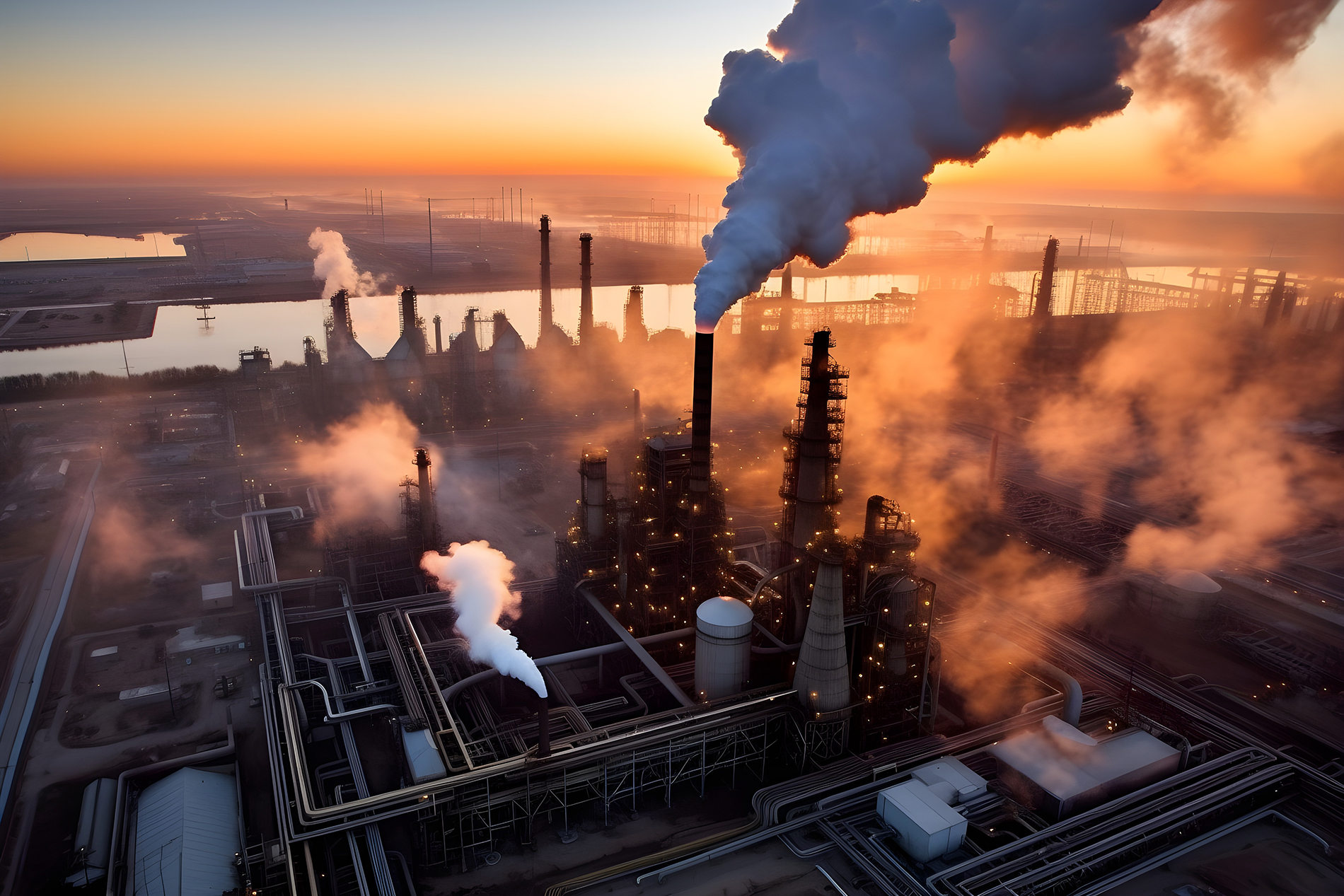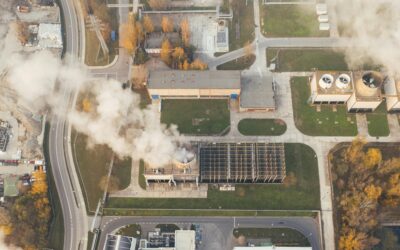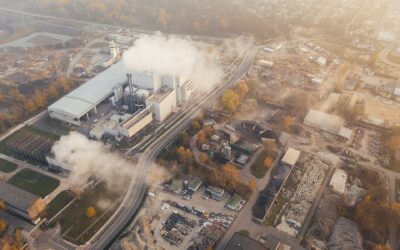For decades, new government policies and activism have helped us make big strides in environmental protection. However, the world continues to see higher temperatures, leading to severe weather events, flooding, drought, wildfires, and more. But what environmental challenges should we focus on moving forward to ensure we’re heading in the right direction to slow, stop, or even reverse climate change?
Below, we review the biggest environmental problems of 2024 and beyond to help you understand what areas we must focus on to reach our climate goals.
What Will Be the Biggest Environmental Problems of 2024?
The U.S. and the entire world face many immediate environmental issues, but some are more pressing and time-sensitive than others. Let’s review the six biggest environmental issues the U.S. faces as we near 2024.
1. Fossil Fuels
Fossil fuels, whether oil, natural gas, or coal, remain a critical environmental issue as we near 2024. Burning these fuels for energy — powering a vehicle or generating electricity — is the leading cause of climate change, as it makes up over 75% of the greenhouse gas emissions (GHG emissions) worldwide and 90% of all carbon dioxide (CO2) emissions. If we’re looking to slow global warming to 1.5 degrees Celsius above pre-industrial levels, we must halve our fossil fuel emissions by 2033.
The need to cut our fossil fuel emissions within a decade makes limiting our reliance on fossil fuels the most pressing environmental issue the U.S. faces in 2024. Doing this requires help from several industries and consumers, as a large portion of fossil fuel emissions come from both transportation and power generation.
Automakers must continue pushing for green vehicle development, including hybrids, plug-in hybrids, electric vehicles, and other alternative fuels, and consumers must be willing to adopt this technology.
But also, the power-generation industry must continue moving away from gas-, coal-, and oil-fired power plants and switch to green and renewable energy generation, such as hydropower, wind, and solar. Consumers can also do their part by switching to providers offering green options, if available, and even take matters into their own hands by installing solar panels on their homes.
2. Deforestation
The U.S. population continues to grow annually, and the more it grows, the land use to build houses, roads, and other structures increases. Building these structures often results in deforestation. This urbanization of forested land has several serious consequences.
First, trees are carbon sinks, meaning they absorb carbon from the air. Once we cut them down, we eliminate that absorption. And with CO2 emissions being a huge contributor to global warming, we can’t risk eliminating these carbon-absorbing natural resources.
Second, urbanizing forested land impacts wildlife and their habitats and ecosystems, resulting in biodiversity loss and displacement, which can eventually threaten the very existence of certain species.

3. Air Quality
The air quality in the U.S. has improved over the years. From 2021 to 2022, air pollution was lower in eight of every 10 cities, according to NBC News research. What’s more, these clean air improvements span back to 1980, so we’ve been on the right track for over 40 years. However, now’s not the time to take the foot off the accelerator, as it’s easy to go backward.
Various industries need to continue finding ways to limit their emissions. Automakers must continue finding ways to limit the pollutants their vehicles emit. And most of all, consumers must continue pushing industries to make changes by supporting those who’ve made the efforts. Consumers must also be willing to adopt new, reduced-emission transportation and other emission-reducing technology as it becomes available in 2024 and beyond.
4. Drinking Water
Drinking water is often taken for granted in the U.S., but recent water-contamination crises in Mississippi, Michigan, Maryland, and Hawaii show that this issue can affect us too. Some of this is the result of old pipes and aging infrastructure, but it also has a lot to do with climate change.
Climate change has resulted in extreme weather conditions that can result in severe flooding that puts added strain on aging drinking water infrastructures. And should this rainwater infiltrate the drinking water supply, it could bring pollutants and toxins along with it, making the freshwater undrinkable.
5. Waste
As the U.S. population grows, so does its consumption. And the more consumption we have, the more waste we produce. According to the U.S. Environmental Protection Agency (EPA), the average American creates 4.9 pounds of solid waste daily. While some of this waste goes to recycling, composting, or is burned for energy production, 50% of it — 146 million tons annually — heads to landfills.
When this waste is in landfills, it doesn’t just decompose and disappear. Instead, as it decomposes, it releases methane, which is 80 times worse than CO2 when contributing to climate change because it traps significantly more heat.
Making matters worse, not all this trash ends up in landfills. Much of it, including plastic waste, ends up in the oceans. This plastic pollution can severely impact marine ecosystems and animals.
To help with this, companies must rethink their packaging, using recyclables or reusable packaging where possible. Consumers should try to support those companies making an effort to reduce wasteful packaging as well as reuse and recycle packaging when possible.
6. Natural Resources
As our population grows, so does our demand for natural resources. If our demand exceeds the supply, we risk natural resource depletion, which is when we consume them faster than they are replaced. An example of natural resource depletion would be removing fish from the ocean for food at a rate that exceeds their breeding rate. And this can apply to any natural resource, whether it’s renewable or not, including water, fossil fuels, trees, and more.
Natural resource depletion can lead to many issues, including water shortages, oil shortages, loss of forested lands, mineral depletion, and even species extinction.
Through policies limiting resource use, we can help ensure plenty of natural resources are available for future generations. Also, we can use technology to find new and renewable resources to replace more limited natural resources.
What Will Be the Biggest Environmental Problem in the Future?
While future generations will likely have plenty of environmental problems to tackle, one stands head and shoulders above all others. That’s climate change. A whopping 97% of science papers agree that human activities have led to the climate crisis known as global warming.
Global warming and climate change are about more than just warmer temperatures. They can cause other serious issues, including rising ocean levels impacting coastal cities and states; dramatic climate events, such as long droughts or massive flooding; and the extinction of certain species. This is why it’s so critical to get the problem under control.
All that said, slowing and reversing climate change isn’t something that’ll happen quickly. It will take many years of incremental improvement before we reach our goals.
We have pieces of the puzzle in place, such as the Paris Agreement, a United Nations pact to limit global warming to 1.5 degrees Celsius annually through emissions reductions and to eventually attain net-zero emissions, among other climate-focused initiatives. Thus far, the Paris Agreement has been a mixture of successes and failures, but it is just one piece of a large puzzle to slow and stop climate change.
What Are the Facts About Climate Change in 2023?
Burning fossil fuels, deforestation, and unsustainable power generation are some of the biggest environmental issues facing us in the future. But these all point back to one critical result, the need to slow and ideally reverse climate change through aggressive climate action, such as clean energy.
As mentioned earlier, climate change is the biggest environmental problem of 2024 and beyond, so let’s review some of the facts about climate change as of 2023.
2023 Is Likely to Be One of the Warmest Years Ever
According to the National Centers for Environmental Information outlook, 2023 has a 99% chance of being one of the 10 warmest years on record. There’s also an 89% chance it’ll be one of the five-warmest years on record.
And through May 2023, this prediction has proven true, as it’s been the fourth-warmest year ever. May was particularly warm, ringing in as the third-warmest May on record.
The Water Cycle Is Intensifying
A rising global climate is also bringing about more intense water cycles. This increases the risk and severity of sudden flooding and long droughts. Experts anticipate increased rainfall in higher latitudes and decreased rainfall in the subtropics.
Sea Ice Is Hitting Record Lows
Sea ice — a key indicator in global warming — has hit extreme lows in 2023. This year, the Arctic sea ice extent reached its third-lowest level recorded in January 2023 at 5.15 million square miles. That is roughly 243,000 square miles less than the average between 1991 and 2000.
The Antarctic ice extent was even worse, checking in at 1.25 million square miles in January, 700,000 square miles less than the 1991 to 2000 average and a new record low.
This melting sea ice contributes to rising sea levels, which can lead to even more severe coastal flooding.
Oceans Are Warming and Becoming More Acidic
As global temperatures rise, so does the temperature of our oceans. Ocean water expands as it warms, compounding the coastal flooding mentioned earlier. Also, the ocean can absorb CO2 from the atmosphere, but this results in the ocean becoming more acidic, threatening sensitive marine species and damaging key ecological settings, such as coral reefs.
You Can Do Your Part to Impact the Biggest Environmental Problems of 2024
One of the biggest environmental problems of 2024 is climate change fueled by human activities, such as burning fossil fuels and deforestation. Fortunately, you can do your part to reduce your carbon footprint and help slow climate change.
One step you can take is to offset some of your carbon footprint by purchasing voluntary carbon credits. These carbon credits help fund green projects that reduce emissions. Not sure where to start? Check out Terrapass’s wide selection of voluntary carbon credits. You can then choose the one that suits you and know you’re helping push us in the right direction.
Brought to you by terrapass.com










